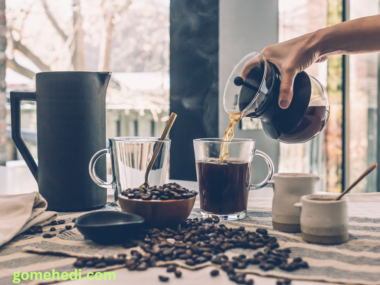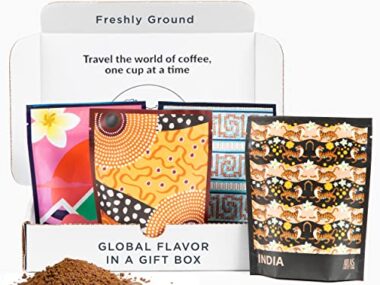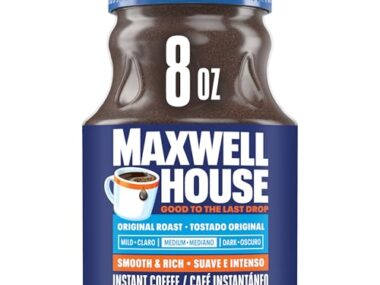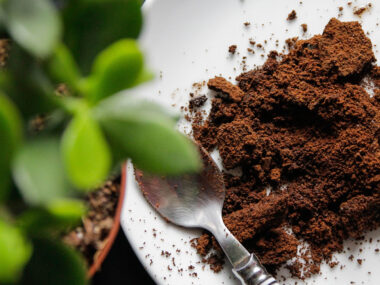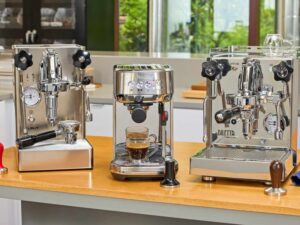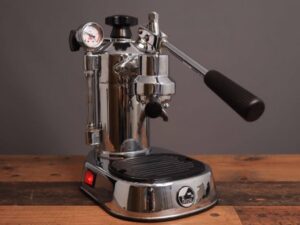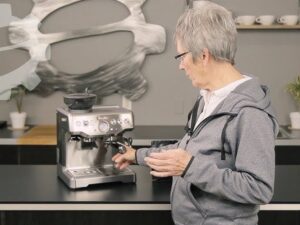To make perfect percolated coffee, timing is crucial. The right duration enhances flavor and aroma. But many wonder: how long to percolate coffee for the best taste?
Percolating coffee can seem tricky, but it’s simple with a bit of practice. The process involves cycling boiling water through coffee grounds until the desired strength is reached. Too short, and the coffee is weak. Too long, and it turns bitter.
So, how long should you percolate coffee for the best taste? Understanding the ideal percolation time can transform your coffee experience. In this guide, we’ll explore the perfect duration to achieve that rich, full-bodied coffee you crave. Whether you’re a coffee novice or a seasoned brewer, mastering this can make your mornings much more enjoyable. Let’s dive into the art of percolating coffee to perfection.
Percolation Process
Brewing the perfect cup of coffee can feel like an art. One method that stands out is percolation. The percolation process determines how long to percolate coffee, affecting its flavor and strength. Understanding how this process works can help you make the best coffee every time.
What Is Percolation?
Percolation is a method of brewing coffee. It uses gravity to cycle hot water through coffee grounds. This method extracts flavors from the coffee grounds. The process continues until the coffee reaches the desired strength. It is a popular way to brew coffee because it is simple and effective.
Key points about percolation:
- Uses a percolator.
- Relies on gravity to move water.
- Cycles water through coffee grounds.
- Can be used on a stovetop or electric percolator.
Many coffee lovers enjoy percolated coffee because it tends to be strong and bold. The process ensures that the water fully saturates the coffee grounds. This results in a rich and flavorful cup of coffee.
Percolation is different from other brewing methods. For instance, drip coffee only passes water through the grounds once. In contrast, percolation recycles the water multiple times. This difference can lead to a stronger taste.
How Percolation Works
The percolation process begins with water in the bottom chamber of the percolator. As the water heats up, it turns into steam. The steam rises and condenses, becoming hot water again. This hot water moves up a tube and is dispersed over the coffee grounds.
The water then filters through the coffee grounds. It extracts oils, flavors, and other compounds. The brewed coffee drips back into the lower chamber. This cycle repeats until the coffee reaches the desired strength.
Steps in the percolation process:
- Heat water in the bottom chamber.
- Water turns to steam and rises.
- Steam condenses and becomes hot water.
- Hot water disperses over coffee grounds.
- Brewed coffee drips into the lower chamber.
- Cycle repeats until desired strength is achieved.
The time it takes to percolate coffee can vary. It usually takes about 7 to 10 minutes. The longer the coffee percolates, the stronger it will be. It is important to monitor the process to avoid over-extraction. Over-extracted coffee can taste bitter.
Using a timer can help you achieve consistent results. Start with 7 minutes and adjust as needed. Taste your coffee and decide if you prefer it stronger or milder. This way, you can make the perfect cup of percolated coffee every time.
Ideal Brewing Time
Brewing the perfect cup of percolated coffee requires attention to detail, especially the brewing time. The ideal brewing time ensures that the coffee is neither too weak nor too bitter. Understanding the right duration to percolate coffee can elevate your morning cup to new heights.
Recommended Time Frames
Knowing the recommended time frames for percolating coffee is crucial. The general consensus is that coffee should be percolated for 7 to 10 minutes. This time frame allows the coffee grounds to fully saturate and release their flavors.
Here are some guidelines based on the type of percolator you are using:
- Stovetop Percolator: 8 to 10 minutes
- Electric Percolator: 7 to 9 minutes
It’s important to monitor the brewing process. If the coffee percolates for too long, it can become too bitter. Conversely, if it percolates for too short a time, it may taste weak and under-extracted.
For a balanced cup, aim for the middle of the recommended time frame. Here is a simple table to help you:
| Type of Percolator | Recommended Time |
|---|---|
| Stovetop | 8 to 10 minutes |
| Electric | 7 to 9 minutes |
Factors Affecting Time
Several factors can affect the ideal brewing time for percolated coffee. These include the grind size, the type of coffee, water temperature, and personal taste preferences.
Grind Size: Finer grinds brew faster than coarser ones. If your coffee is ground too finely, it may over-extract and become bitter quickly. Coarser grinds, on the other hand, may require a longer brewing time to achieve full flavor.
Type of Coffee: Dark roast coffee generally brews faster than light roast. This is due to the differences in density and oil content. Adjust your brewing time based on the roast level of your coffee.
Water Temperature: The ideal water temperature for percolating coffee is between 195°F and 205°F (90°C to 96°C). If the water is too hot, it can over-extract the coffee. If it’s too cold, it may under-extract.
Personal Taste Preferences: Everyone has unique taste preferences. Some prefer a stronger, more robust flavor, while others like a milder taste. Adjust the brewing time to suit your personal preferences.
Here’s a quick summary:
- Grind Size: Finer grinds = shorter time, Coarser grinds = longer time
- Type of Coffee: Dark roast = shorter time, Light roast = longer time
- Water Temperature: 195°F to 205°F (90°C to 96°C)
- Personal Taste: Adjust to your preference
By considering these factors, you can fine-tune your brewing time to make the perfect cup of percolated coffee every time.
Coffee Grind Size
Brewing the perfect cup of coffee is an art. One crucial factor that impacts the flavor and aroma of your coffee is the grind size. The size of your coffee grounds can greatly influence the brewing process and the time it takes to percolate. Understanding the differences between coarse and fine grinds can help you achieve the perfect brew every time.
Coarse Vs. Fine
The grind size of your coffee beans can vary from coarse to fine. Each grind size has its own unique characteristics and is best suited for different brewing methods.
Coarse Grind:
- Resembles sea salt or kosher salt.
- Best for French press, cold brew, and percolator.
- Allows water to flow through the grounds more easily.
Fine Grind:
- Similar to table salt or powdered sugar.
- Ideal for espresso machines and Aeropress.
- Creates a larger surface area for water to extract flavors.
Using the right grind size ensures optimal extraction and flavor. A coarse grind is suitable for slow brewing methods, while a fine grind works best with quick extraction processes.
Impact On Brewing Time
The size of your coffee grounds directly impacts the brewing time. Different grind sizes require different amounts of time to extract the flavors properly.
Coarse Grind:
- Requires a longer brewing time.
- Typically takes 4-6 minutes for a French press.
- Cold brew can take up to 12 hours.
Fine Grind:
- Brews much faster.
- Espresso takes about 25-30 seconds.
- Aeropress takes around 1-2 minutes.
A coarse grind needs more time because water passes through the grounds more slowly. On the other hand, fine grounds brew quickly since water extracts the flavors faster.
Here is a simple table to summarize the impact of grind size on brewing time:
| Grind Size | Brewing Method | Brewing Time |
|---|---|---|
| Coarse | French Press | 4-6 minutes |
| Coarse | Cold Brew | 12 hours |
| Fine | Espresso | 25-30 seconds |
| Fine | Aeropress | 1-2 minutes |
Choosing the right grind size and adjusting your brewing time accordingly can make all the difference in your coffee experience. Experiment with different grind sizes to find what best suits your taste preferences.
Water Temperature
Introduction paragraph about How Long to Percolate Coffee and Water Temperature…
Optimal Temperature Range
Water temperature is crucial in brewing the perfect cup of percolated coffee. The right temperature ensures the coffee extracts just the right flavors. For percolated coffee, the optimal temperature range is between 195°F and 205°F (90°C to 96°C). This range allows the coffee grounds to release their full potential.
Brewing at this range ensures that the coffee is neither under-extracted nor over-extracted. Under-extraction can result in a weak, sour taste, while over-extraction can make the coffee bitter. It’s essential to monitor the temperature closely.
| Temperature (°F) | Temperature (°C) | Effect on Coffee |
|---|---|---|
| Below 195°F | Below 90°C | Under-extracted, sour |
| 195°F – 205°F | 90°C – 96°C | Optimal extraction, balanced flavor |
| Above 205°F | Above 96°C | Over-extracted, bitter |
Using a reliable thermometer can help you maintain the right temperature. Some modern percolators come with built-in temperature controls. These features can ensure the water stays within the optimal range.
Effects Of Temperature On Flavor
The temperature of water significantly impacts the flavor of percolated coffee. At the right temperature, the coffee grounds release their oils and soluble compounds, creating a rich and aromatic cup. If the water is too cool, it won’t extract enough flavors, leading to a bland and weak taste.
Conversely, if the water is too hot, it can extract too many bitter compounds from the coffee grounds. This results in a harsh and unpleasant flavor. Achieving the perfect balance is key to a delightful cup of coffee.
Here are some key points to remember:
- Cooler water (below 195°F or 90°C): Results in under-extraction, weak and sour flavors.
- Optimal range (195°F – 205°F or 90°C – 96°C): Balanced extraction, rich and full-bodied flavor.
- Hotter water (above 205°F or 96°C): Leads to over-extraction, bitter and unpleasant taste.
By keeping your water temperature within the optimal range, you can ensure each cup of percolated coffee is consistently delicious. The right temperature is a crucial factor in brewing a satisfying coffee experience.
Coffee-to-water Ratio
Percolating coffee is an art that requires precision. One key factor is the coffee-to-water ratio. This ratio determines the strength and flavor of your coffee. Using the right amount of coffee and water can make a big difference in taste. Let’s explore how to get the perfect coffee-to-water ratio.
Standard Ratios
The standard coffee-to-water ratio is crucial for a balanced brew. For most coffee lovers, the golden ratio is 1:15. This means one part coffee to 15 parts water. This ratio works well for many types of coffee.
Here is a simple guide:
- 1 cup of water (8 oz): Use about 0.53 oz (15 grams) of coffee.
- 2 cups of water (16 oz): Use about 1.06 oz (30 grams) of coffee.
- 4 cups of water (32 oz): Use about 2.12 oz (60 grams) of coffee.
This ratio ensures a well-balanced cup. It is neither too strong nor too weak. The table below further illustrates the standard ratios:
| Water (oz) | Coffee (grams) |
|---|---|
| 8 | 15 |
| 16 | 30 |
| 32 | 60 |
Adjusting For Strength
Some people prefer their coffee stronger or weaker. Adjusting the coffee-to-water ratio can help. Here are tips for customizing your brew:
- Stronger Coffee: Use more coffee. Try a ratio of 1:12. For 8 oz of water, use 20 grams of coffee.
- Weaker Coffee: Use less coffee. Try a ratio of 1:18. For 8 oz of water, use 13 grams of coffee.
Experiment with these ratios:
- Start with the standard 1:15 ratio.
- Adjust by small amounts.
- Test your brew after each change.
Everyone has different tastes. Finding the right balance takes a bit of practice. Keep a journal to note what works best for you.
Remember, the quality of coffee beans and water also affects the taste. Use fresh beans and clean water for the best results.
Taste Testing
Brewing the perfect cup of coffee can be a delightful ritual. One crucial step in this process is percolation time. The time you allow your coffee to percolate greatly influences its taste. This is where taste testing comes in. By experimenting with different percolation times, you can find the ideal balance that suits your palate. Let’s dive into how you can fine-tune this aspect of coffee brewing.
Personal Preferences
Everyone’s taste buds are unique. What tastes perfect to one person might be too strong or too weak for another. This is why personal preference plays a significant role in determining how long to percolate coffee. Here are some factors to consider:
- Strength of Coffee: Some people enjoy a robust, strong cup, while others prefer a milder taste.
- Bitterness: Longer percolation times can lead to increased bitterness. If you dislike bitter coffee, you might prefer a shorter percolation period.
- Aroma: The aroma of coffee can change with different brewing times. Experiment to find the scent that appeals to you the most.
Understanding these factors can help you decide on your ideal percolation time. Try keeping a coffee journal. Note the percolation time, strength, and flavor profile for each brew. Over time, you’ll notice patterns that can guide you to your perfect cup.
Experimenting With Time
Finding the perfect percolation time is a matter of experimentation. Start by setting a baseline time, such as 7 minutes. Brew your coffee and take notes on its taste, strength, and aroma. Then, adjust the time in small increments, say by 30 seconds. Here’s a simple table to guide your experimentation:
| Percolation Time | Taste Notes | Strength |
|---|---|---|
| 6 minutes | Milder flavor, less bitter | Light |
| 7 minutes | Balanced flavor | Medium |
| 8 minutes | Stronger flavor, slightly bitter | Strong |
By adjusting the percolation time and recording your observations, you can zero in on the perfect brew. Remember, the goal is to find what pleases your palate. Enjoy the process of discovery. Your perfect cup of coffee is just a few experiments away.
Common Mistakes
Making a perfect cup of percolated coffee is both an art and a science. One of the most common mistakes people make is not knowing how long to percolate coffee. This can lead to either over-percolating or under-percolating, both of which can ruin the taste of your coffee. Understanding these common mistakes can help you achieve that perfect cup every time.
Over-percolating
Over-percolating coffee is a frequent mistake that coffee enthusiasts make. This happens when coffee grounds are exposed to heat and water for too long. The result? A bitter, overly strong brew that can be unpleasant to drink.
Here are some signs you may be over-percolating your coffee:
- Very dark color: The coffee appears almost black.
- Bitter taste: The flavor is harsh and overpowering.
- Burnt aroma: The smell is more like burnt toast than fresh coffee.
To avoid over-percolating, follow these tips:
- Monitor the time: Percolate coffee for no more than 10 minutes.
- Use the right amount of coffee: Stick to the recommended coffee-to-water ratio.
- Watch the heat: Keep the heat on medium to avoid scorching.
Here is a simple table to guide you:
| Percolation Time | Heat Level | Coffee-to-Water Ratio |
|---|---|---|
| 7-10 minutes | Medium | 1 tablespoon per 6 ounces |
Under-percolating
Under-percolating is another common mistake, leading to a weak and underwhelming cup of coffee. This occurs when the coffee grounds don’t have enough time to fully extract their flavors.
Signs you might be under-percolating include:
- Light color: The coffee appears very light or watery.
- Weak taste: The flavor is bland and lacks depth.
- Watery consistency: The coffee feels more like tea than coffee.
To prevent under-percolating, consider these tips:
- Extend the time: Ensure the coffee percolates for at least 7 minutes.
- Check the grind: Use a medium-coarse grind suitable for percolators.
- Maintain the heat: Keep a consistent medium heat throughout the process.
A helpful table to avoid under-percolating:
| Percolation Time | Heat Level | Coffee-to-Water Ratio |
|---|---|---|
| 7-10 minutes | Medium | 1 tablespoon per 6 ounces |
Tips For Perfect Brew
Brewing the perfect cup of percolated coffee requires attention to detail. The time you percolate your coffee can make or break its taste. Here are some essential tips to ensure your coffee is brewed to perfection.
Equipment Recommendations
Using the right equipment is the first step towards a perfect brew. Here are some top recommendations:
- Stovetop Percolator: A classic choice, offering control over the heat source. Ideal for those who enjoy a hands-on approach.
- Electric Percolator: Convenient and consistent. Perfect for those who prefer a set-it-and-forget-it method.
- Glass Percolator: Allows you to monitor the brewing process. Great for visual learners.
Consider the following table for a quick comparison:
| Type | Pros | Cons |
|---|---|---|
| Stovetop | Control over heat, traditional | Requires attention, manual |
| Electric | Convenient, consistent | Less control over process |
| Glass | Monitor brewing, aesthetic | Fragile, may require more care |
Maintenance For Best Results
Proper maintenance of your percolator ensures the best coffee every time. Follow these tips:
- Regular Cleaning: Clean your percolator after each use. Prevents build-up of old coffee oils and residue.
- Descale Monthly: Descale your percolator once a month. Use a mixture of water and vinegar to remove mineral deposits.
- Inspect Parts: Regularly check the basket, tube, and lid for wear and tear. Replace any damaged parts immediately.
Here is a simple cleaning schedule:
| Task | Frequency |
|---|---|
| Clean after use | After every use |
| Descale | Once a month |
| Inspect parts | Weekly |
By following these tips and maintaining your equipment, you can enjoy a perfect brew every time.
Frequently Asked Questions
How Long Should I Percolate Coffee?
Percolate coffee for 7-10 minutes. This duration ensures optimal flavor extraction without over-extraction, which can result in bitterness.
What Is The Best Percolating Time For Strong Coffee?
For a stronger brew, percolate coffee for 10 minutes. This extracts more flavors, providing a robust and intense taste.
Can You Over-percolate Coffee?
Yes, over-percolating coffee can make it bitter. It’s best to stick to 7-10 minutes for a balanced taste.
Does Percolating Time Affect Coffee Flavor?
Yes, percolating time greatly affects coffee flavor. Longer times extract more flavors, while shorter times result in milder coffee.
Conclusion
Finding the right coffee percolation time matters. Too short, and the flavor lacks depth. Too long, and bitterness takes over. Aim for 7-10 minutes for a balanced taste. Experiment to find your perfect cup. Enjoy the rich aroma and full-bodied flavor.
Happy brewing!
